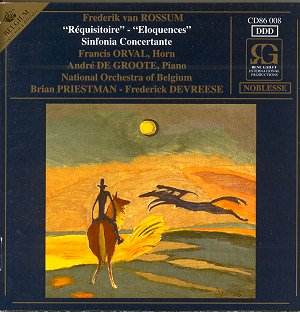 Composer: Darius Milhaud
Composer: Darius Milhaud
Works: Piano Concerto, Concerto for Violin and Orchestra, Quartet No. 7, Six Chants Populaires Hébraïques, La Création du Monde, Suite Française
Performers: Marguerite Long (piano), Yvonne Astruc (violin), Galimir Quartet, Martial Singher (baritone), Orchestra Nationale, Philharmonic Symphony Orchestra of New York, conducted by Darius Milhaud
Recording: 1931-1946
Label: Pearl GEM 0124
A striking figure in French music of the early 20th century, Darius Milhaud’s eclectic style reflects both the influences of his time and his own innovative spirit. This compilation offers a rich tapestry of his work, showcasing his ability to blend various musical idioms, from jazz to classical traditions, in a way that is both accessible and deeply sophisticated. The selected recordings span a period of notable artistic development in Milhaud’s career, encapsulating his voice during the prolific years from 1931 to 1946, a time when he was defining his unique compositional language.
The Piano Concerto, performed by the dedicatee Marguerite Long, stands out as a particularly delightful example of Milhaud’s pianistic wit and orchestral color. This twelve-minute work is characterized by a lightness that belies its structural complexity. Long’s execution is crisp, her phrasing imbued with a joyous effervescence that captures the shifting moods of the piece. The second movement, a barcarolle, is a highlight, where the woodwinds shimmer with distinct character, making their presence felt against the backdrop of the strings. The finale’s transition from a resolute fugato to the piano’s insouciant dialogue with the orchestra is rendered with a playful vigor, a hallmark of Milhaud’s style that invites listeners into a world of unexpected contrasts.
Yvonne Astruc’s interpretation of the Violin Concerto further exemplifies Milhaud’s lyrical sensibilities. Her warm tone and vibrant phrasing breathe life into the work, which unfolds with an Arcadian charm. The interplay between Astruc and the accompanying flute adds a pastoral quality that is quintessentially French. As she navigates through the work’s lyrical passages, the frisky portamentos and the buoyant melodies create a captivating atmosphere that is both delightful and rich in texture. The Galimir Quartet’s performance of the Seventh Quartet is equally commendable, marked by their seamless tonal integration and imaginative interpretations of the work’s jovial character. While the recording quality of certain sections, notably the Lento, exhibits minor imperfections, the ensemble’s youthful exuberance compensates, delivering a performance that is both engaging and artistically cohesive.
The Six Chants Populaires Hébraïques, with baritone Martial Singher, reveal Milhaud’s ability to convey deep emotional narratives through song. Singher’s flexible and resonant baritone captures the nuances of each chant, from the buoyant “Le Chant du veilleur” to the more somber “Chant de la Délivérance.” His mastery of line and mood enhances the lyrical beauty of these pieces, showcasing Milhaud’s gift for marrying text and music effectively.
La Création du Monde, though recorded in a less polished acoustic environment, retains its charm and significance as one of Milhaud’s most celebrated works. The tentative quality of the performance reflects the composer’s early interpretations, lacking the confidence of his later recordings. Nevertheless, the orchestral textures and rhythmic vitality remain compelling, providing a glimpse into Milhaud’s evolving style.
The Suite Française, recorded in 1946, offers a poignant finale to this anthology. Echoing the composer’s longing for his homeland amidst the backdrop of war, each of its five movements encapsulates distinct regional characteristics with an unmistakable joie de vivre. The vibrant orchestration and rhythmic vitality illustrate Milhaud’s enduring connection to French folk traditions, resulting in a work that is both nostalgic and celebratory.
This distinguished collection not only highlights the versatility of Milhaud’s catalogue but also underscores the interpretative strengths of the performers involved. The recording quality, while varied, generally supports the music’s inherent charm and complexity. A thorough and engaging experience, this release stands as a testament to Milhaud’s legacy and the enduring appeal of his work, making it an essential addition for both enthusiasts and scholars of 20th-century music.



